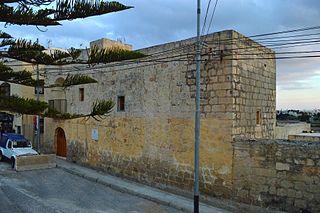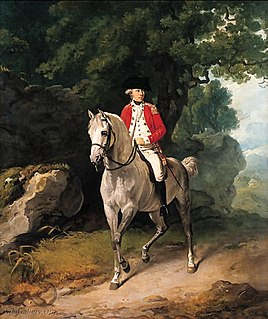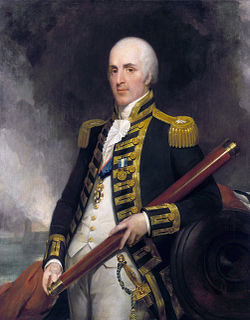| Maltese Militia Coast Artillery | |
|---|---|
| Active | 1801–1802 |
| Country | |
| Branch | |
| Type | Militia |
| Role | Coastal artillery |
| Size | Two companies |
| Garrison/HQ | St. Paul's Bay and Marsa Scirocco |
| Commanders | |
| Captain | John Vivion |
The Maltese Militia Coast Artillery was a coastal artillery militia unit in the British Army which existed from 1801 to 1802 in Malta, then a British protectorate.

Coastal artillery is the branch of the armed forces concerned with operating anti-ship artillery or fixed gun batteries in coastal fortifications.

A militia is generally an army or some other fighting organization of non-professional soldiers, citizens of a nation, or subjects of a state, who can be called upon for military service during a time of need, as opposed to a professional force of regular, full-time military personnel, or historically, members of a warrior nobility class. Generally unable to hold ground against regular forces, it is common for militias to be used for aiding regular troops by skirmishing, holding fortifications, or irregular warfare, instead of being used in offensive campaigns by themselves. Militia are often limited by local civilian laws to serve only in their home region, and to serve only for a limited time; this further reduces their use in long military campaigns.

The British Army is the principal land warfare force of the United Kingdom, a part of British Armed Forces. As of 2018, the British Army comprises just over 81,500 trained regular (full-time) personnel and just over 27,000 trained reserve (part-time) personnel.
After the French blockade ended and the British took over Malta in September 1800, many of the British regiments stationed on the island left to fight in the Egyptian Campaign. This led to a shortage of troops on the islands, and since the High Command was unable to send reinforcements. The Commander-in-Chief of British forces in Malta, General Henry Pigot, was allowed to raise a local militia force to supplement the Maltese Light Infantry. [1]

The Siege of Malta, also known as the Siege of Valletta or the French Blockade, was a two-year siege and blockade of the French garrison in Valletta and the Three Cities, the largest settlements and main port on the Mediterranean island of Malta, between 1798 and 1800. Malta had been captured by a French expeditionary force during the Mediterranean campaign of 1798, and garrisoned with 3,000 men under the command of Claude-Henri Belgrand de Vaubois. After the British Royal Navy destroyed the French Mediterranean Fleet at the Battle of the Nile on 1 August 1798, the British were able to initiate a blockade of Malta, assisted by an uprising among the native Maltese population against French rule. After its retreat to Valletta, the French garrison faced severe food shortages, exacerbated by the effectiveness of the British blockade. Although small quantities of supplies arrived in early 1799, there was no further traffic until early 1800, by which time starvation and disease was having a disastrous effect on health, morale, and combat capability of the French troops.

The French campaign in Egypt and Syria (1798–1801) was Napoleon Bonaparte's campaign in the Ottoman territories of Egypt and Syria, proclaimed to defend French trade interests, seek further direct alliances with Tipu Sultan, weaken Britain's access to India, and to establish scientific enterprise in the region. It was the primary purpose of the Mediterranean campaign of 1798, a series of naval engagements that included the capture of Malta.

General Sir Henry Pigot GCMG was a British Army officer.
On 1 January 1801, Pigot issued a proclamation calling on men from the former National Congress Battalions to join the Maltese Militia. [1] At the same time, the Maltese Militia Coast Artillery was set up as the coastal artillery portion of the militia, augmenting the Royal Artillery. It consisted of two companies manning the batteries located at St. Paul's Bay and Marsa Scirocco, along with detachments manning the coastal towers. The unit was raised and commanded by Captain John Vivion. [2]

The National Congress Battalions, also known as the Truppe di Campagna, was an irregular military set up in Malta just after the Maltese rebellion against French rule in September 1798. It existed for two years before being disbanded on 11 September 1800.
The Maltese Militia or Malta Militia was a militia unit in the British Army which existed from 1801 to 1802, and again from 1852 to 1857. The first incarnation was a volunteer unit of 900 men raised in the British protectorate of Malta. The second establishment of the militia was as a compulsory service for the entire Maltese male population while the island was a British crown colony.

The Royal Regiment of Artillery, commonly referred to as the Royal Artillery (RA) and colloquially known as "The Gunners", is the artillery arm of the British Army. The Royal Regiment of Artillery comprises thirteen Regular Army regiments, King's Troop Royal Horse Artillery and five Army Reserve regiments.
The men wore uniforms consisting of a cotton jacket and trousers, and a leather shako with a blue sash. [1]

A shako is a tall, cylindrical military cap, usually with a visor, and sometimes tapered at the top. It is usually adorned with some kind of ornamental plate or badge on the front, metallic or otherwise, and often has a feather, plume, or pompom attached at the top.
In 1802, the Maltese Militia Coast Artillery was disbanded in accordance with the Treaty of Amiens, and its roles were taken over by the Malta Coast Artillery. [2]

The Treaty of Amiens temporarily ended hostilities between France and the United Kingdom during the French Revolutionary Wars. It was signed in the city of Amiens on 25 March 1802 by Joseph Bonaparte and Marquess Cornwallis as a "Definitive Treaty of Peace." The consequent peace lasted only one year and was the only period of general peace in Europe between 1793 and 1814.
The Malta Coast Artillery was a coastal artillery unit in the British Army which existed from 1802 to 1815 in Malta, then a British protectorate and later a colony.





